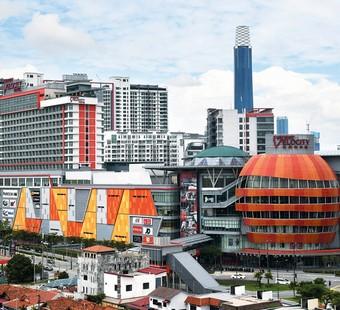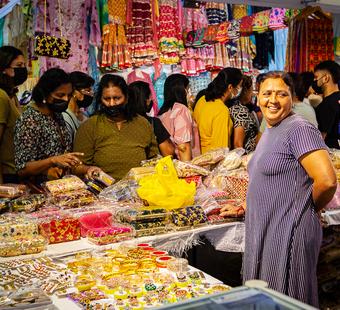Kampung Baru, famous for its colourful history, food stalls, night market and the iconic Nasi Lemak Antarabangsa, lends Kuala Lumpur considerable character.
This century-old Malay enclave offers a rare glimpse into a time capsule of a small slice of history that exists within its walls. Today, it is a celebrated foodies’ paradise and a reference point for traditional Malay architectures in the city, starkly juxtaposed against the Twin Towers in the background.
Tucked between Jalan Tun Razak, Jalan Ampang and Jalan Sultan Ismail loop, the charming Kg Baru is dwarfed by the growing city around it. While its surroundings are transforming into metropolitan quarters, Kampung Baru manages to escape the long arm of urban development.
This “new village” was formed in 1880s in downtown KL for the relocated Malay communities from the city centre (now Masjid Jamek). Spanning over 124 hectares, it was listed as a Malay Agricultural Settlement by the British in 1900 as a pastoral community before being declared unsuitable for farming and subsequently converted to residential status. According to the census done in 1928, it housed 544 houses and 2,600 villagers.
Historically, Kampung Baru has been the focal point of many major Malaysian narratives: Sultan Suleiman Club (the elite Malay society) in Kampung Baru, was visited by HRH Prince of Wales as part of His introduction to Malaya during His Commonwealth Tour in 1922; the first Malay Congress Assembly was also held at Sultan Suleiman Club to protest against the Malayan Union in 1946, a precursor of the current UMNO party. Darker historical events include the May 13 1969 riot at Princess Road (now Jalan Raja Muda Abdul Aziz) and the crippling flood in 1970 which inundated this part of the city.
Discussions on the development of Kampung Baru have taken place for many decades but it was hampered by issues restricting its development, including multiple ownership, disproportion in land prices and quaint rules of law arising from the historical conception of the land use.
Currently Kampung Baru is featured in the Greater KL-Klang Valley development plan and the Kampung Baru Development Corporation has been set up to transform the area into a tourist and culture centre, main commercial area and an urban residential district with a unique Malay identity. Any development may want to preserve this quaint side of KL, with its palm-tree-lined streets, wooden traditional houses and blooming frangipanis.






